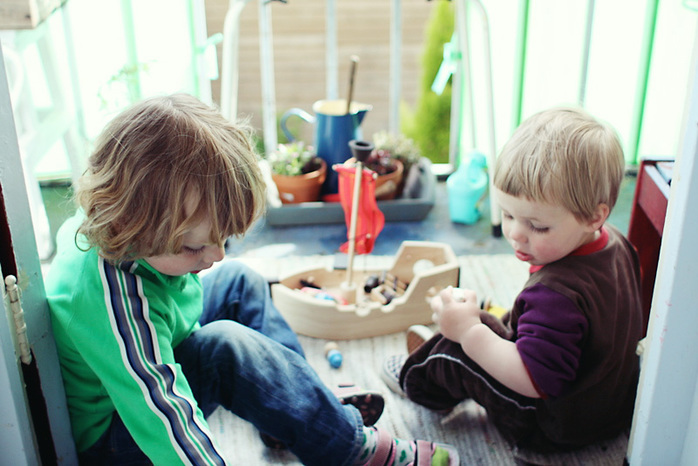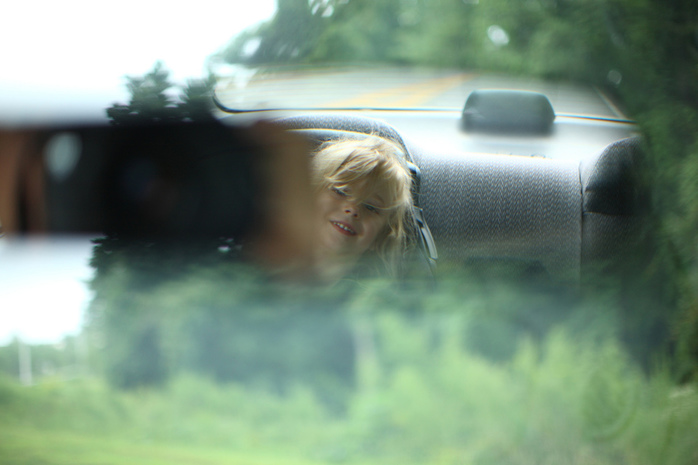Moving can be a regular hassle in the best of scenarios, but moving with children in tow is a whole other kettle of fish. Kids are often wary of change, so it's best to be well prepared. Follow these ten steps to make the moving process as stress-free as possible.
 Kids by Suzette Pauwels
Kids by Suzette Pauwels
1. Breaking the news
Breaking the news of your move can be one of the most critical moments of the entire process. Use the first announcement to explain to your kids how you think the move will benefit the whole family. You’re going to want to bring the kids in on the moving process by having them help out, but don’t cross that bridge just yet — leave this for after the initial talk. If you have more than one kid, address each of them later in private once they've had some time to let it all sink in. Express to them personally what you’re expecting. Kids are aspirational, and if you make it clear to them that you need their help as part of the process, they’re more likely to step up and help out. Being as open and clear about what moving entails will always be better in the long run. With young children, don’t assume that they'll have a good grasp on what it all means right away. Patience is the key.
2. Keep the lines of communication open
Take the time to talk to your kids about the move. If applicable, ask them what room in the house they'd like, or how they want it to look. Use these conversations as an opportunity to explain the things you think they'll like about the neighbourhood you’re moving to. Take your children seriously and listen to their feelings and concerns even when you can’t address their desires directly. Sometimes, more than anything, children just wants to know that they've been heard, even if they can’t have their way.
 Moving by Marco Varisco
Moving by Marco Varisco
3. Out with the old
This part of the process will depend a lot on the temperament of your kids, but it's time to pare down the household and make room for the new. Getting rid of old stuff can be a pain, or it can be a fun family activity (and as a bonus, you can have a garage sale at the end of it!). It can be tedious and time-consuming to try to go through your child’s things, having to ask them piece by piece what they want to keep or give away, but if you get the kids excited with the prospect of a garage sale, then the kids will do a better job sorting than you ever could. Margaret, mother of two, has another take:
We have moved back when I was still expecting. The only thing that we learned from the experience is to unpack things only as they are needed: emotional mementos and actual necessities. This way, whatever is still in boxes after 60 days can be easily disposed of.
Paring down can be some of the hardest work of moving, so make it easy on yourself.
4. Timing is everything
If you can, try to time the move around the more stable periods in your kids’ lives. Moving during the school year can be disruptive and make integration into the new community and school environment much more difficult.
5. Take advantage of relatives and friends
If you have small children, every minute they can be in another’s care will make the moving process that much easier. If your kids are a bit older, these can be opportune days for them to say their prolonged goodbyes to their friends in the neighbourhood. This will also allow you to space out the packing process a lot more.
6. Pack small boxes of the kids' things last
Go through the contents of these special, easy-access boxes with your kids item by item, and label them well! Don’t make the mistake of packing a favourite toy, book, or videogame too soon. When you arrive at the new place, you likely won’t have the luxury of friends and family that can entertain the kids while you sort through your new life, so you’ll want to have the kids entertain themselves for a time while you get to sorting through boxes. Jennifer, mother of two, also advises:
Make sure vaccination cards, medicine, any prescription they may have and medical insurance papers are readily available and not stuck in some anonymous package.
These are not the sorts of items you don't want to have to hunt around for should the need arise in a new place.
 Empy Apartment by Matt Biddulph
Empy Apartment by Matt Biddulph
7. Saying Goodbye
You’re likely leaving a lot of people behind that you and your children had relationships with. A goodbye party can be a great way to bookend your time with the old place. If you can, though, have your neighbour or family member host the event. This can double as a goodbye present and will also save you the nightmare of planning a party in a half-packed house.
8. Familiarize your family with the new neighbourhood
Research the opportunities and activities that are close to your kids' hearts. Don’t just tell them about it; show them! It can be easy to be a bit of a hermit when you’ve just moved to a new place and don’t know anyone, so your kids might just need a push in the right direction. If they’re teenagers, mind that you don’t push too hard, but letting slip about the local youth culture and music scenes in the early days can pay later.
9. Keep the familiar that works
Routine can be very comforting in new environments and can help children deal with separation anxiety. Do your best to keep important family times and activities the same as soon as you can after arriving at the new house. Family meetings, dinners, weekly traditions — try to keep these consistent or go out and find a new local equivalent to meet your needs. Modifying old traditions in this way can also allow you to bridge the gap between the old and new and make the new place feel like home a lot quicker.
 Moving by Pawel Loj
Moving by Pawel Loj
10. Remember your own needs
You’re doing a lot of work to make your kids comfortable with the move and you’re doing your best to make the process as painless as possible for them. You know it will be better for them in the long run, but sometimes that still won’t mean they understand right away. It’s okay. In all of this, remember to treat yourself with as much consideration and kindness as the rest of the family. You’re doing your best and a lot is counting on you. It's okay to make mistakes, and moving is stressful business. Relax. Breathe. It’s going to be great.



